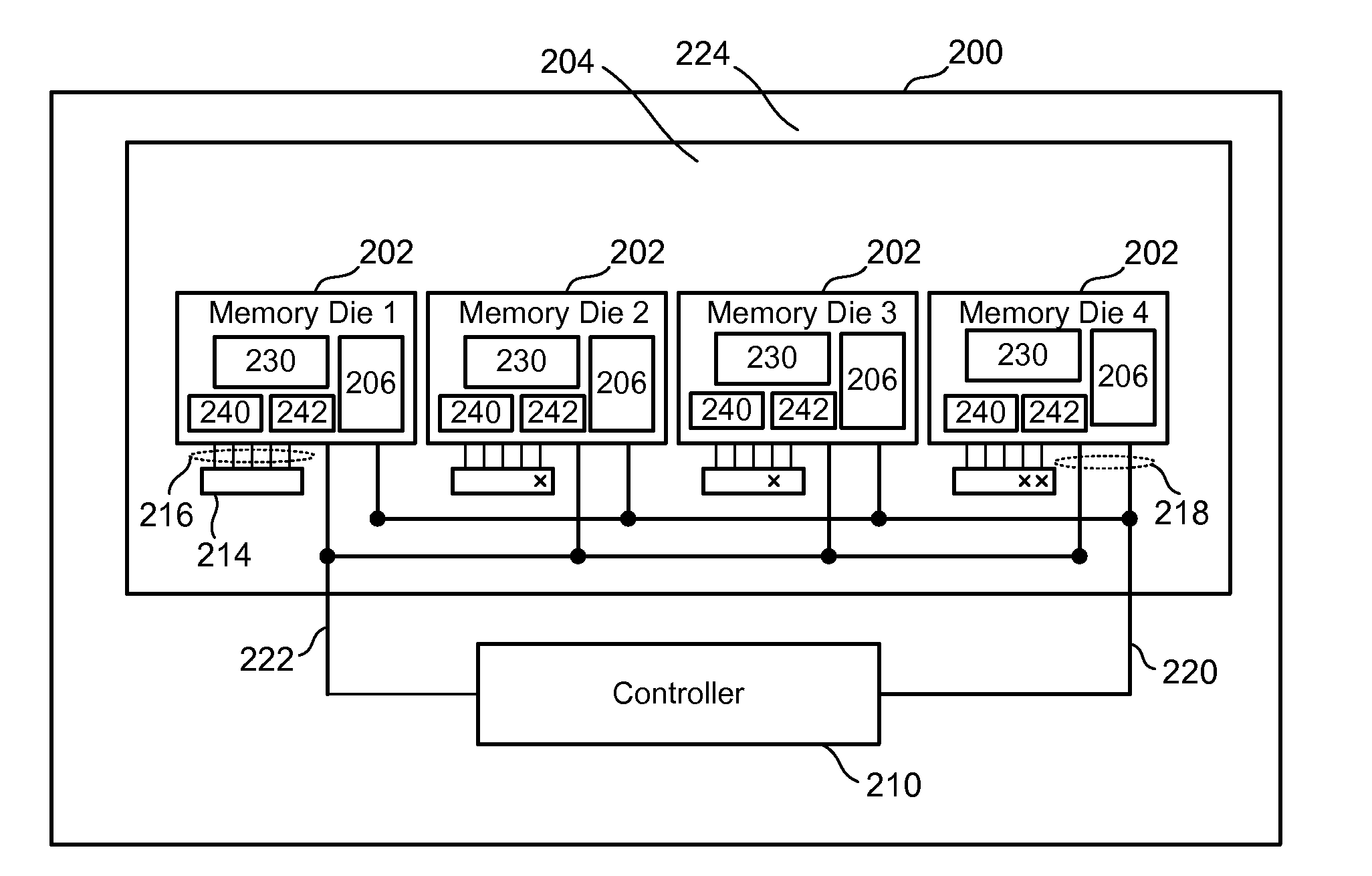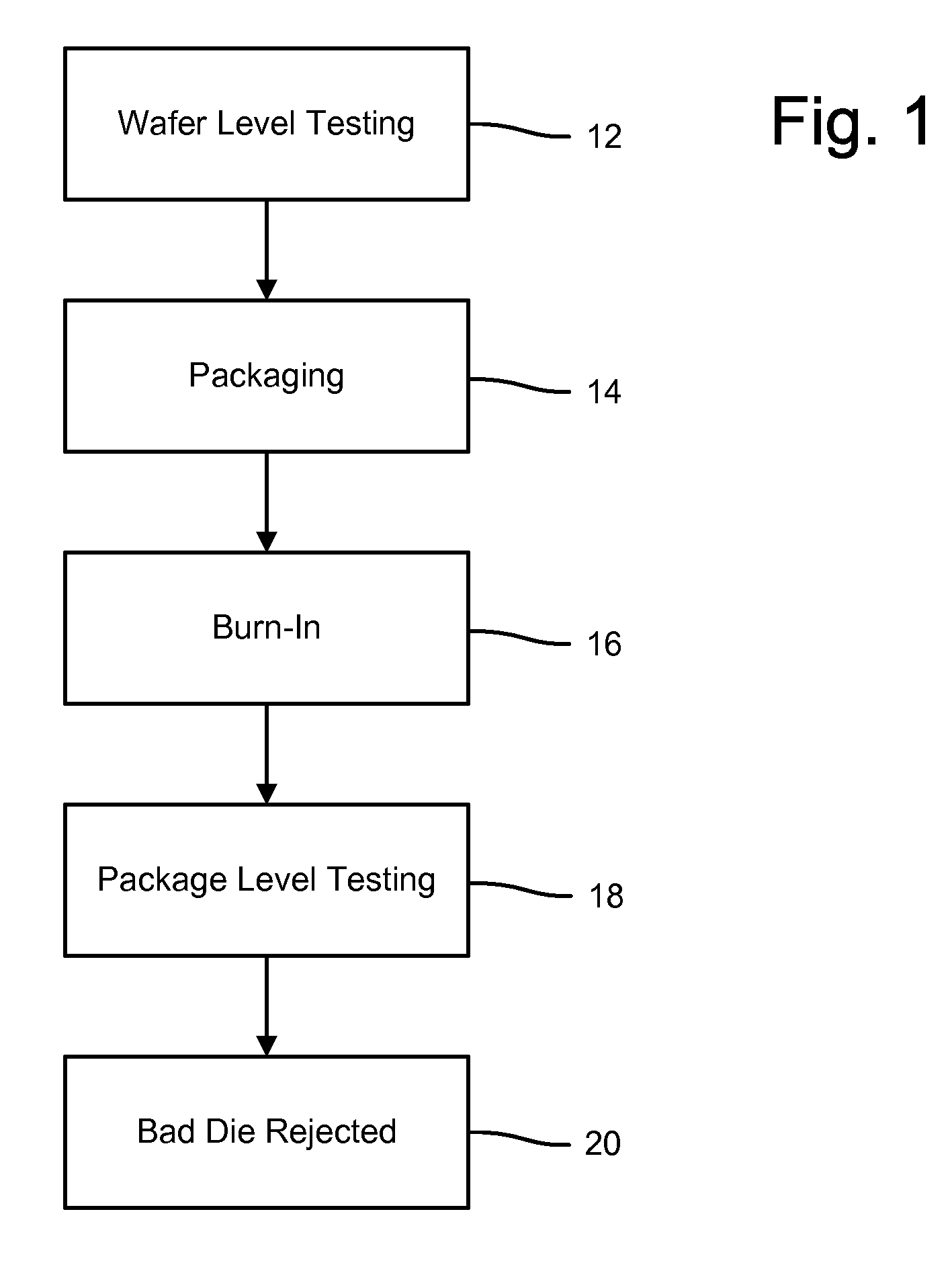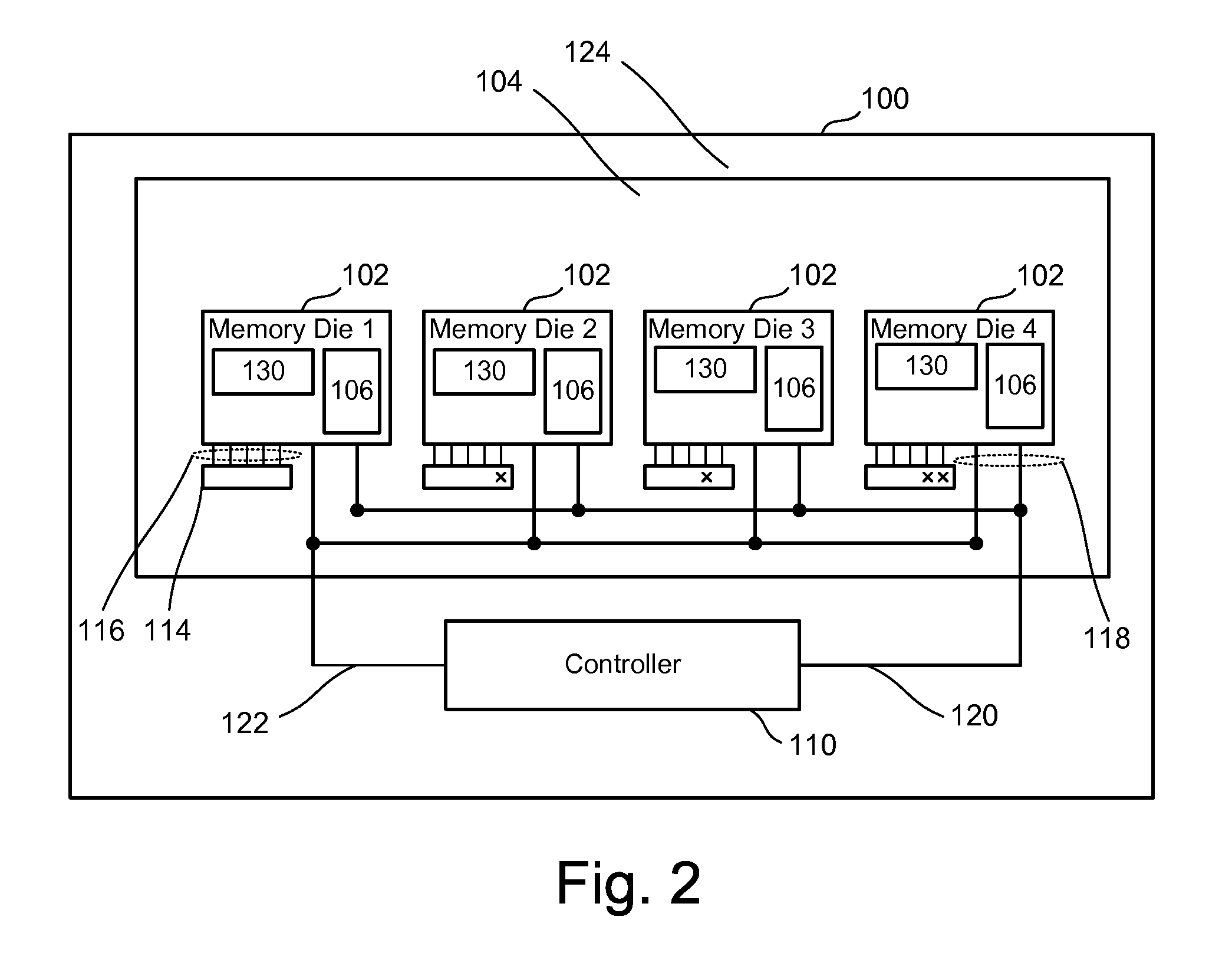Systems for programmable chip enable and chip address in semiconductor memory
a technology of semiconductor memory and programmable chips, applied in the field of integrated circuit technology, can solve the problems of defective memory array peripheral circuitry, defective memory array memory peripheral circuitry, and defective components of semiconductor memory devices
- Summary
- Abstract
- Description
- Claims
- Application Information
AI Technical Summary
Benefits of technology
Problems solved by technology
Method used
Image
Examples
Embodiment Construction
[0034]FIG. 2 schematically illustrates a non-volatile memory system 100 having a number of individual memory die 102 and a controller 110. Each memory die is an integrated circuit memory chip or die mounted on a substrate or printed circuit board 104. The controller 110 is also an integrated circuit chip or die mounted on its own printed circuit board 124. The two printed circuit boards can be mounted to a third printed circuit board (not illustrated). In other implementations, the controller and memory die may be mounted on the same board.
[0035]Each memory device includes a non-volatile memory array 106 formed of individual non-volatile memory cells. The memory array can include, but is not limited to, flash memory cells arranged using architectures such as the NAND and NOR architectures. The memory die 102 each include peripheral circuitry for addressing and controlling their respective memory array. The controller 110 is included in the memory system to control memory operations ...
PUM
 Login to View More
Login to View More Abstract
Description
Claims
Application Information
 Login to View More
Login to View More - R&D
- Intellectual Property
- Life Sciences
- Materials
- Tech Scout
- Unparalleled Data Quality
- Higher Quality Content
- 60% Fewer Hallucinations
Browse by: Latest US Patents, China's latest patents, Technical Efficacy Thesaurus, Application Domain, Technology Topic, Popular Technical Reports.
© 2025 PatSnap. All rights reserved.Legal|Privacy policy|Modern Slavery Act Transparency Statement|Sitemap|About US| Contact US: help@patsnap.com



